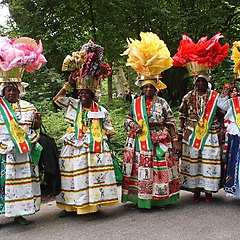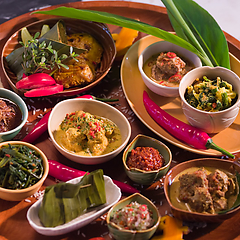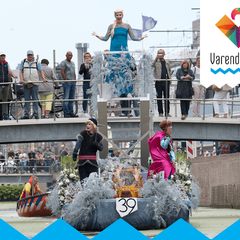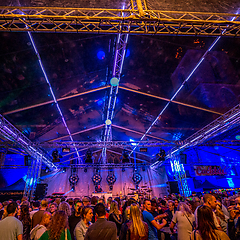Gabber is a Dutch youth subculture that originated in Rotterdam in the early nineties of the 20th century. Gabber expresses itself through a variety of music styles, external features, dance and vocabulary. The word gabber comes from the Bargoens and means friend or size. What started as a working-class subculture in the port city of Rotterdam has now become a worldwide phenomenon. The first acquaintance with gabber is often through hardcore, a hard and fast music variant within electronic dance music. The culture is experienced both indoors and outdoors, gabbers often call it 'a way of life'. The culture mainly shows itself during hardcore parties and festivals. That's where gabbers come together, sometimes thousands at a time. Often in identical costumes (Australian tracksuits and nike air max sneakers), hairstyles (eg bald, blockheads or shaved) to 'chop' together (the name of the dance, like raving). Where gabber was mainly a metropolitan youth culture in the early 1990s, the subculture is no longer tied to one specific social class, region or age. However, the popularity of the city has shifted to the province. Gabbers, people who belong to the gabber culture, are often part of a larger group of friends with fellow gabbers. The culture is passed on and spread through friends, family, events and social media. Meanwhile, the subculture has settled all over the world. The Netherlands as the country of birth of culture plays an important role in the narrative surrounding gabber. International gabbers, for example, wear orange clothing, referring to the national color, football shirts from Dutch clubs, in particular Feyenoord, referring to Rotterdam as the home of culture, or clothing with imprint of Dutch artists and record labels, for example Rotterdam Records. Gabbers from all over the world come to the Netherlands to experience the culture in the mother country. Festivals like Defqon-1, Dominator and Thunderdome are a few examples of hardcore events that draw thousands of international gabbers. The Dutch festivals are seen as Mecca of the gabber culture in terms of quality and experience, as a real gabber you must have visited a Dutch hardcore festival at least once. The theme in music and visual language supports the extreme character of the music. Subjects that pass by include monsters, post-apocalyptic societies and the end of time. But personal themes such as not being let down by a harsh society, or emphasizing the 'one family' sentiment that is strongly present within the hardcore and gabber scene, also regularly come up. The subculture is in itself apolitical: it's about entertainment, like-minded people, dancing and individual expression. But as in most youth subcultures, politics sometimes seeps into the culture. In the first half of the millennium, there were problems with right-wing extremist incidents. The phenomenon Lonsdale youth, named after the clothing brand that belonged to the uniform of the second generation gabber, became a national concept. However, these were actions by individuals, not a subculture with a politically motivated ideology. Politics does not seem to play an important role in the current gabber scene.
The Network of Intangible Cultural Heritage (ICH) shows the variety of cultural expressions that communities, groups or individuals themselves recognize as intangible cultural heritage. They have registered this ICH in the Network. The Dutch Centre for Intangible Cultural Heritage is therefore not responsible for the content of the description.
Description
Contact
Boris Postma PhotographyAmsterdam
Netherlands
Website



